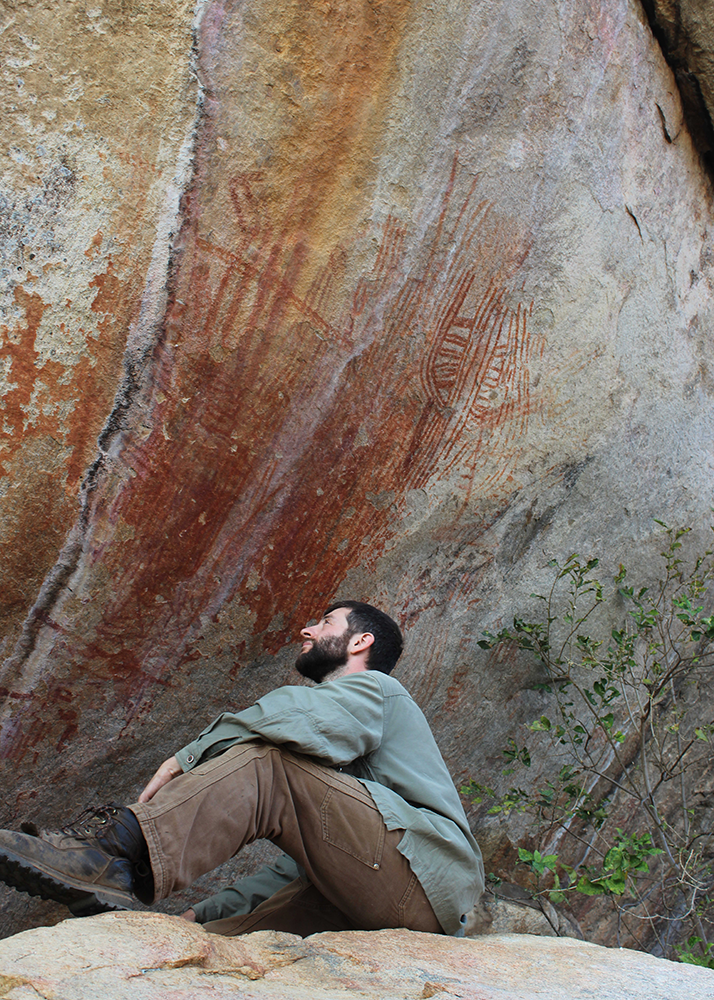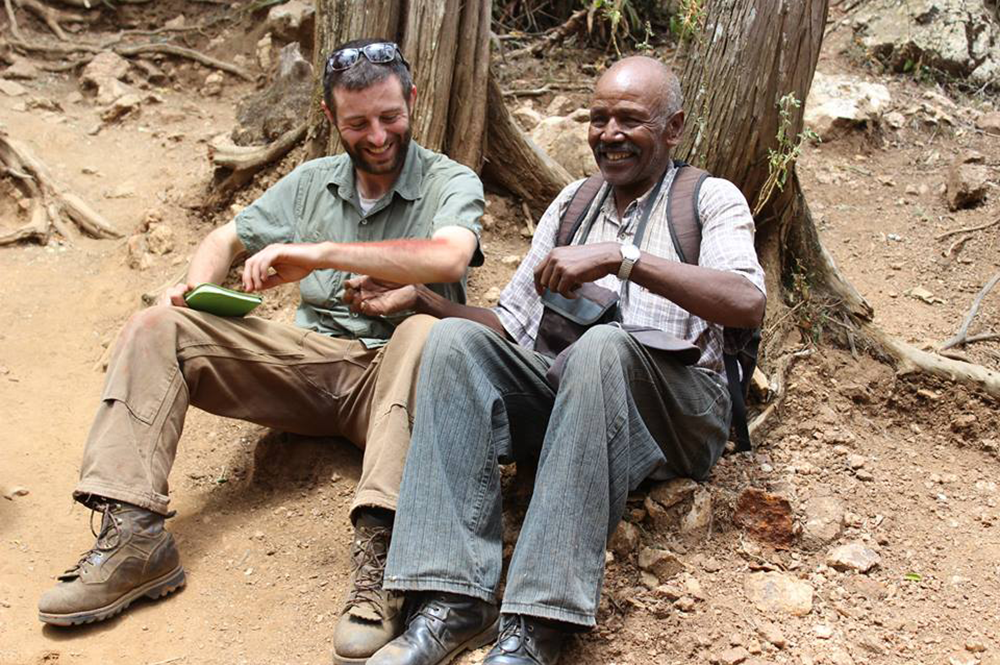Archaeologist turns to the intersection of science and rock art for answers to human symbolic behavior

Andrew Zipkin isn’t your everyday archaeologist.
As a National Science Foundation postdoctoral fellow in the Department of Anthropology, his work begins with archaeology. But Zipkin’s research requires a few other techniques. By applying methods from geology and chemistry to the archaeological record, Zipkin seeks to answer questions about the origins of what makes us human.
From collapsed caves in central Zambia to volcanoes in the Kenya Rift Valley, Zipkin studies ochre pigments used in rock art to tell a story about the evolution of human capabilities for symbolic behavior. And his work is just beginning.
Zipkin’s path to being a geochemist and archaeologist is anything but linear. As an undergraduate student with a focus in pre-med biology, Zipkin came to a troubling conclusion: He absolutely hated what he was doing. A love for combining field work with “bench science,” however, led him to archaeology.
“By the end of undergrad, I sort of realized that I had questions about human behavioral evolution,” said Zipkin. “I had questions about when we started using pigments and making symbols, and how we exploited things on the landscape like mineral resources. I reached graduate school and, pretty early on, I realized the only way that I could answer these questions was to become a chemist—the very thing I was bad at in undergrad.”
The rest, as they say, is in the books. Zipkin returned to chemistry, learning through hands-on training with expert researchers in laboratories in the United States, Canada, and Norway. But it was not without a few challenges.
“My first time doing my own research in a geochem lab was in Newfoundland,” he said. “I had enough funding to spend about a week there, during which I was supposed to get a crash course in sample prep and how to operate the laser attachment on a mass spectrometer, and somehow collect enough data for the next year of dissertation research.”
With more training from and collaborations with chemical and materials scientists, things have gotten a bit smoother. Now, Zipkin focuses on applying his knowledge of natural and physical science techniques to answer questions in anthropological archaeology.
One major way he does this is through “elemental fingerprinting,” which is the measurement of the chemical elements found within ochre (natural pigments made of iron oxide and clay minerals) to tell different geological sources apart and determine the origin of pigments found at archaeological sites.
“Basically we’re trying to measure different sources of ochre pigments on the landscape and come up with a unique, compositional fingerprint for each one,” said Zipkin. “So, if I find some red ochre painted on a cave wall, I can analyze that and hopefully be able to say that it matches a specific source. I can figure out where it came from and how human behavior brought it there.”
One of the geochemical techniques Zipkin uses to analyze the ochre pigments is called ICP-MS, or (if you have the breath) Inductively Coupled Plasma - Mass Spectrometry. In ICP - MS you either dissolve a sample in acid and spray it into the mass spectrometer, or use a laser to vaporize tiny bits of a solid sample. The big challenge for Zipkin is adapting standard ICP - MS sample preparation techniques to work with non-traditional materials like ochre.

“Turning a rock into a fully dissolved solution isn’t easy, especially for a complex mixture of minerals like ochre,” Zipkin said. “Between grad school and my post doc, I have spent about two full years working on various aspects of method development research.”
In addition to Zipkin’s geochemical study of ochre pigments, his research consists of archaeological surveys to find new sites and ethnographic work on the painting of modern rock art. Through these approaches to research, he has combined elemental fingerprinting of ochre artifacts and rock art paints in Kenya, Malawi, and Zambia with new cultural data. He’s spoken with Maasai pastoralists in the Rift Valley of Kenya going through their warrior stages of life, when they are engaged in painting rock art and decorating themselves with ochre.
One broad finding from his work centers around a simple concept: Everyone around the world has the same underlying motivations for symbolic behavior.
“Symbolism is a human universal, and people everywhere have strikingly similar reasons for making visible, material symbols,” said Zipkin. “We talked to people in different parts of Kenya who have painted in caves and rock shelters, and one frequent explanation was that they would paint the walls to indicate which age-set they belong to and how long their group stayed there. It’s the same motivation as the Class of 2016 paying for a monument on campus, or my friends and I carving our names on a tree as kids. You do it so that someone else will see it and think your group was awesome.”
Zipkin will continue his work at U of I until the summer of 2017. He aims to continue to be involved in archaeological chemistry, and use his research to lay the groundwork for closer transdisciplinary collaborations between social and physical scientists.
“I’ve been doing all the basic research,” he said, “and now I can start answering the questions that got me interested in archaeology in the first place.”
New findings from the work of Zipkin and his colleagues were recently published in the journal Quaternary International.








